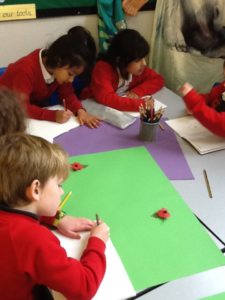Next week, the phoneme we’re learning about is u which is spelled with an o.
- Monday
- nothing
- brother
- mother
- money
- worry
- love
- other
The children will be tested on these words on Friday 6th December.
Next week, the phoneme we’re learning about is u which is spelled with an o.
The children will be tested on these words on Friday 6th December.
This week’s homework is Practice Makes Perfect.
I know some scientific and geographical vocabulary.
The children have been given some definitions for words we have been using in class. We would like the children to match each word to the correct definition.
Homework to be returned to school by Thursday 5th December.
Today, we welcomed both the fire and police service into school. The children were thrilled to see a fire engine parked in the playground!
These vital services keep us safe and it was very interesting to hear all about the roles the professionals play. Ask your child to tell you about the photos below.
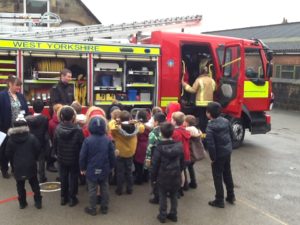

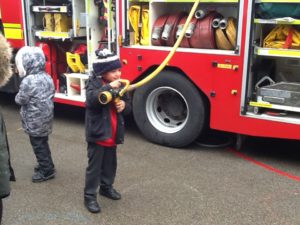










Last week, the focus for the homework task was I know how to STOP bullying.
This homework was set in response to our learning during anti-bullying week. Today, we discussed each others work and celebrated some super ideas of how to spread the all important message;
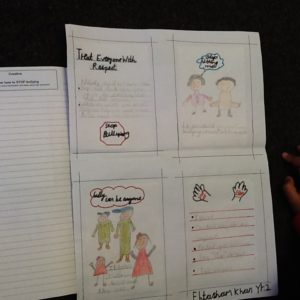
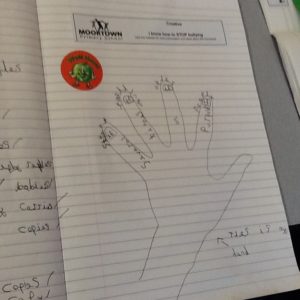
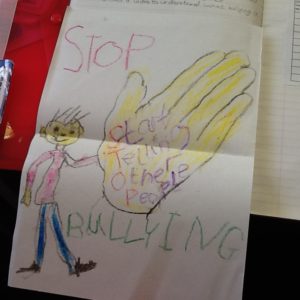
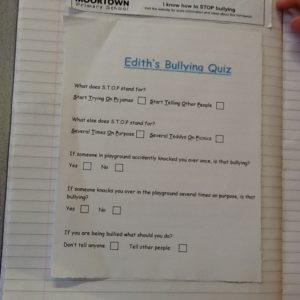
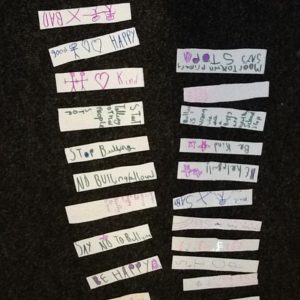
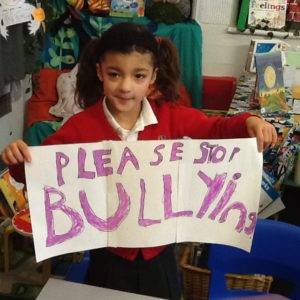
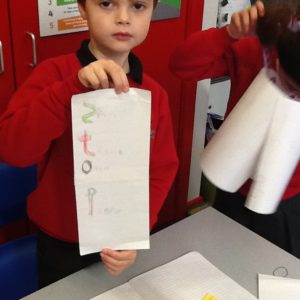
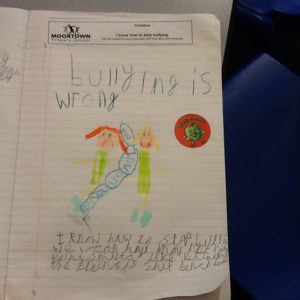
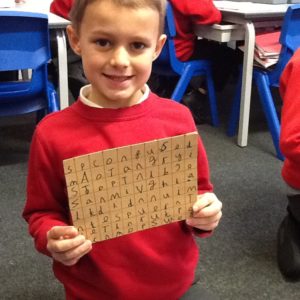
REMEMBER
Bullying is when you hurt someone, physically or emotionally, several times on purpose.
Next week, we will be learning the phoneme or. This is spelt with an a before l and ll.
Over the last couple of weeks, we have been focusing our writing lessons on the children’s book ‘Man on the Moon.’ As the title suggests, it is about a day in the life of Bob, a man who lives on Earth but works on the Moon.

All the children have been really engaged with this learning and we’ve even had a look at the first moon landing in 1969!
This week, the children thought about appropriate questions (using inferred events) they would like to ask Bob.
Is it cold on the moon?
Where do you sleep?
Do you enjoy your job?
Why do you need to wear a special suit?
We decided to see if we could send our questions to Bob. However, Bob is a busy man so instead he sent us a prop to help with our queries.

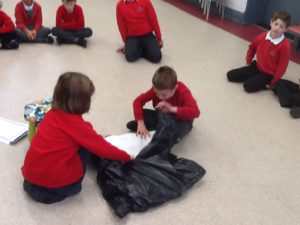

All the children were excited to try the suit on. 

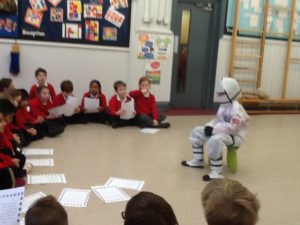
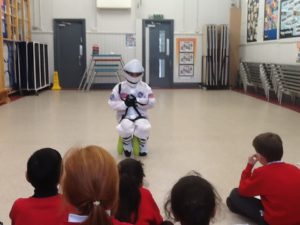
Questions and answers
The children took it in turns to ask the astronaut a question and shake hands.

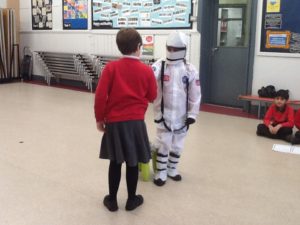
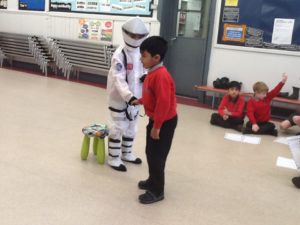
Learning and exploring through drama allows the children to be actively involved. It is a great way to spark imaginations and creativity and this helps to build ideas for writing.
 We even enjoyed a spot of moon walking!
We even enjoyed a spot of moon walking!

Year 2 have become scientists this week. As a class, we discussed the different types of a scientific enquiry; observation over time; pattern seeking; identifying, classifying and grouping; comparative and fair testing (controlled investigations); and researching using secondary sources.
Over our next few lessons, we will be following the children’s curiosity and the class will be taught to use the following practical scientific
methods, processes and skills:
Encouraging questions
To get our curiosity juices flowing, the children chose from a selection of pictures that provided a stimulus. This focus prompted the children to begin to ask questions. The class were encouraged to develop more ‘scientific’ questions that could then be turned into an enquiry. We created our very own ‘I wonder’ wall.
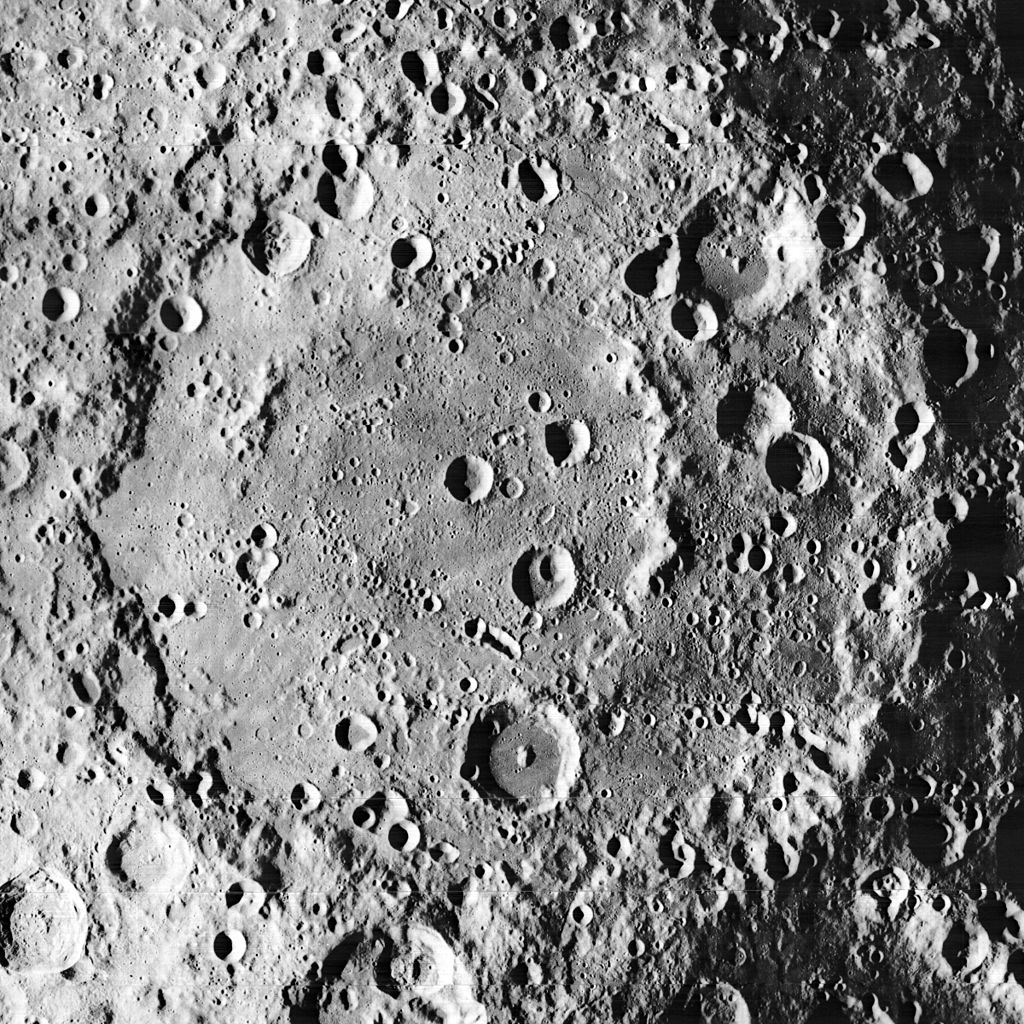


Having generated a lot of questions, we then discussed whether we thought the questions could be answered through scientific enquiry.
What could we do?
How could we find out?
I wonder what we will need?
Even though not all of the children’s questions lend themselves to being investigated, there are other ways of finding answers. Any remaining questions, that can’t be answered, we can use the internet or books to research solutions. After all, this is a valid form of scientific enquiry in its own right and demonstrates that all questions are valued.
Next week, we will be learning about adding –es to nouns and verbs that end with a -y.
The children need to learn to drop the -y for an -i before adding –es.
Here are the spellings to learn:
| fly flies |
| try tries |
| cry cries |
| spy spies |
| reply replies |
| baby babies |
| carry carries |
| copy copies |
Next week, we’re learning about words which have an i sound spelt with a –y at the end of the word. The children will be tested on these words on Friday 15th November.
On top of these words, we are continuing to check some of the common exception words from Year 1. Please help your child by regularly checking the spelling of these words.
Year 1 Common Exception Words
the do
to today of
said says are
were was is
his has
you your they
be he me
she we ask
go so no
by my here
there where friend
love come some
one once school
put push
pull full
house our
Ever since then, poppies have become a symbol of remembering not just those who gave their lives in World War One, but all those who have died on behalf of their country.
Today, we took the opportunity to have a go at sketching poppies. I’m sure you will agree, these drawings are simply stunning.





